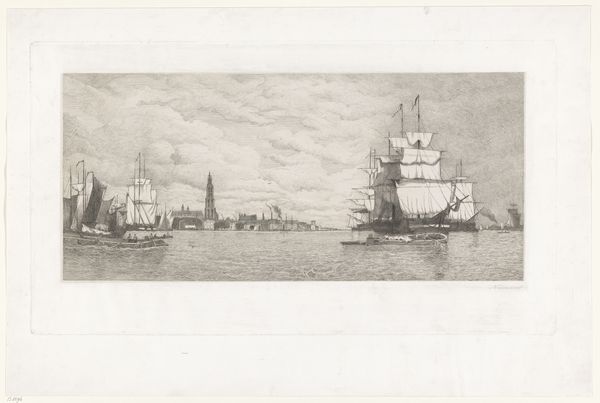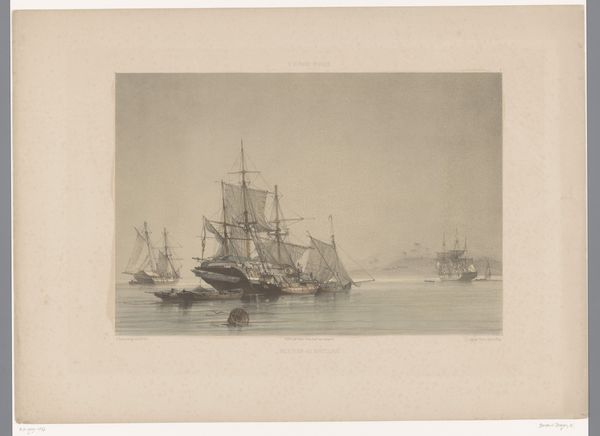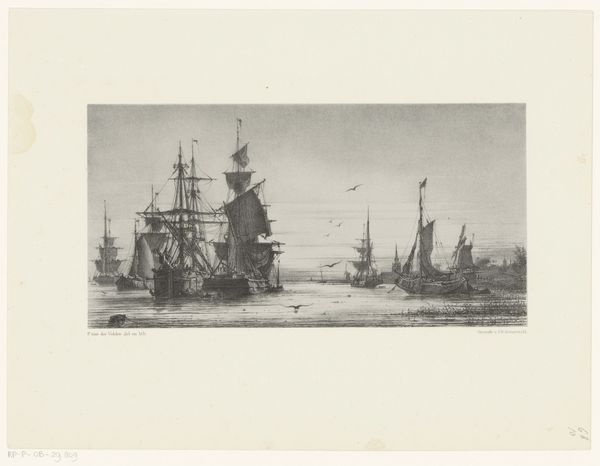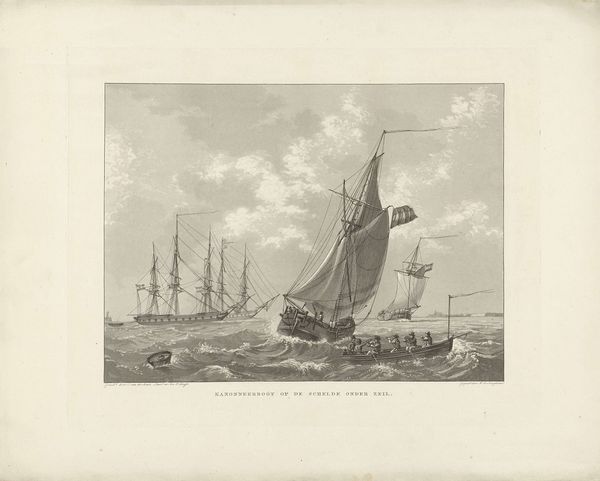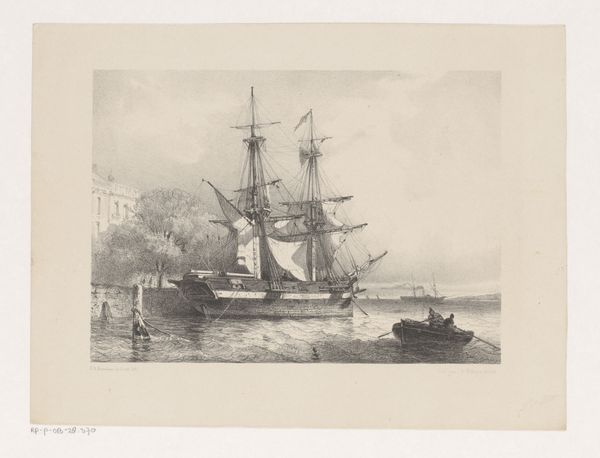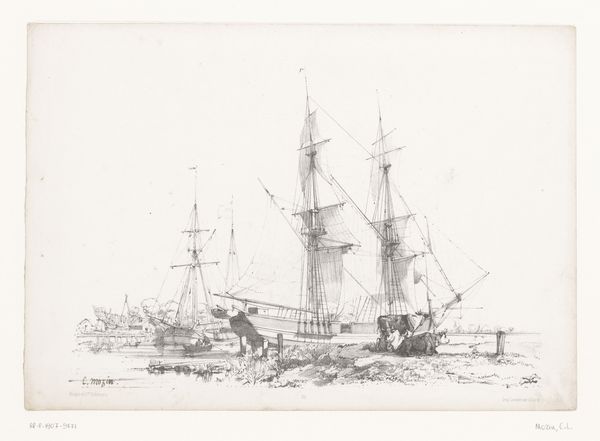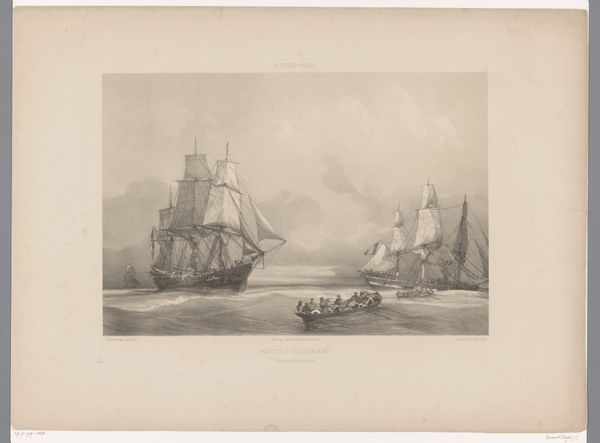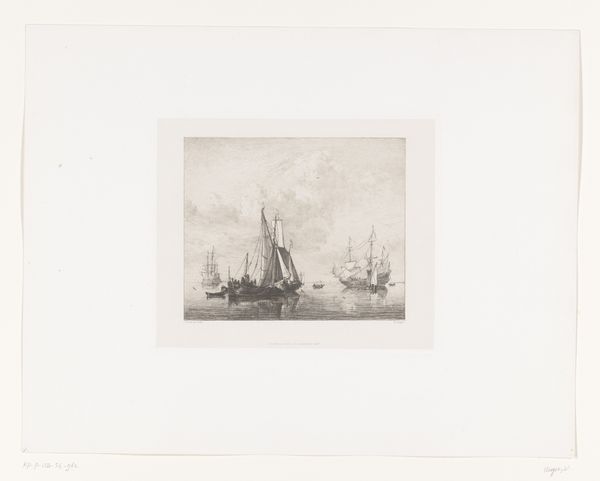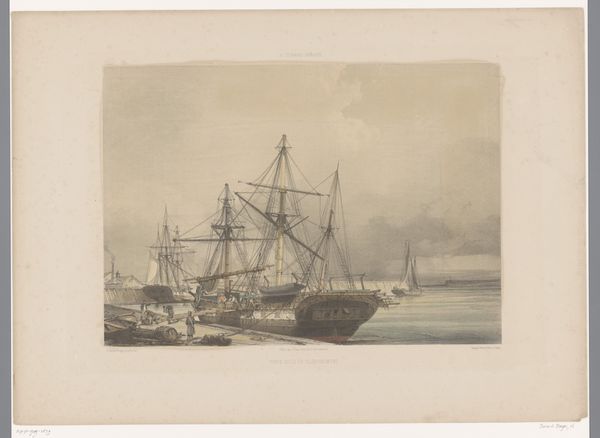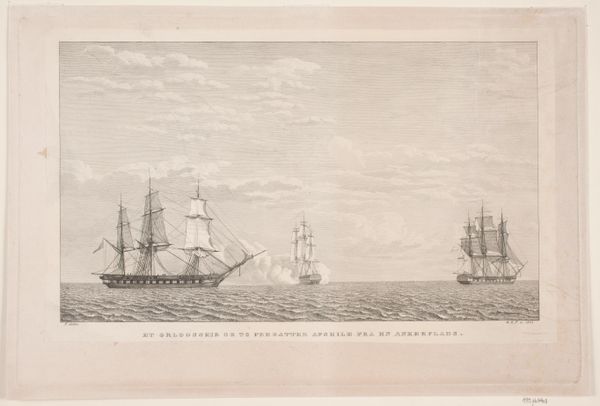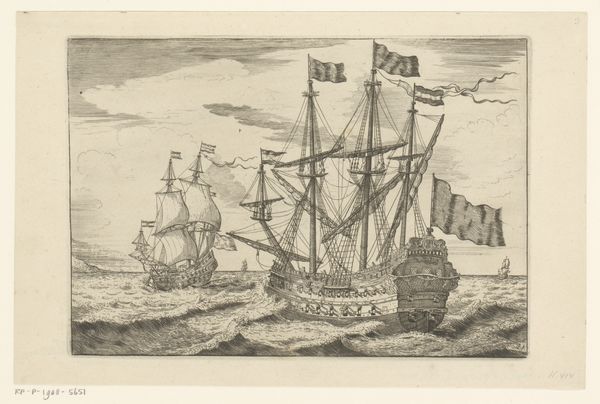
Dimensions: height 300 mm, width 537 mm
Copyright: Rijks Museum: Open Domain
Editor: So, this is "View of Antwerp from the Scheldt" by Auguste Numans, probably made sometime between 1833 and 1883. It's an engraving. I'm immediately struck by how…industrial it feels, despite the traditional sailing ships. There's a tension there. What do you see in this piece, looking at it from a historical perspective? Curator: That's a brilliant observation! I think what stands out to me is precisely that tension you noticed – the clash between the age of sail and the burgeoning industrial revolution. Antwerp, during this period, was a critical port city, deeply implicated in global trade networks, including, problematically, the afterlives of colonial structures. Editor: Colonial structures? How so? Curator: The ships weren't just carrying goods; they were vehicles for geopolitical power. Raw materials extracted from colonized lands flowed through ports like Antwerp, fueling industrial growth in Europe, while finished products were shipped back, reinforcing economic dependencies. And who were the sailors on these ships, do you think? How did their gender, their class, and their origins factor into this scene? Editor: I never thought about it that way, about the human cost. The image itself seems so… picturesque. Curator: Exactly. The ‘picturesque’ often obscures these harsher realities. By focusing on the visual appeal of ships and the skyline, we can easily overlook the labor, the exploitation, and the power dynamics that made such scenes possible. It encourages us to consider not just what is represented, but also what is actively omitted or aestheticized. It encourages a critical engagement, to disrupt the easy viewing of landscape and Baroque art. Editor: That gives me a lot to think about. I appreciate you contextualizing this piece. Curator: And your initial impression was spot on. It's about recognizing that art is never neutral.
Comments
No comments
Be the first to comment and join the conversation on the ultimate creative platform.
